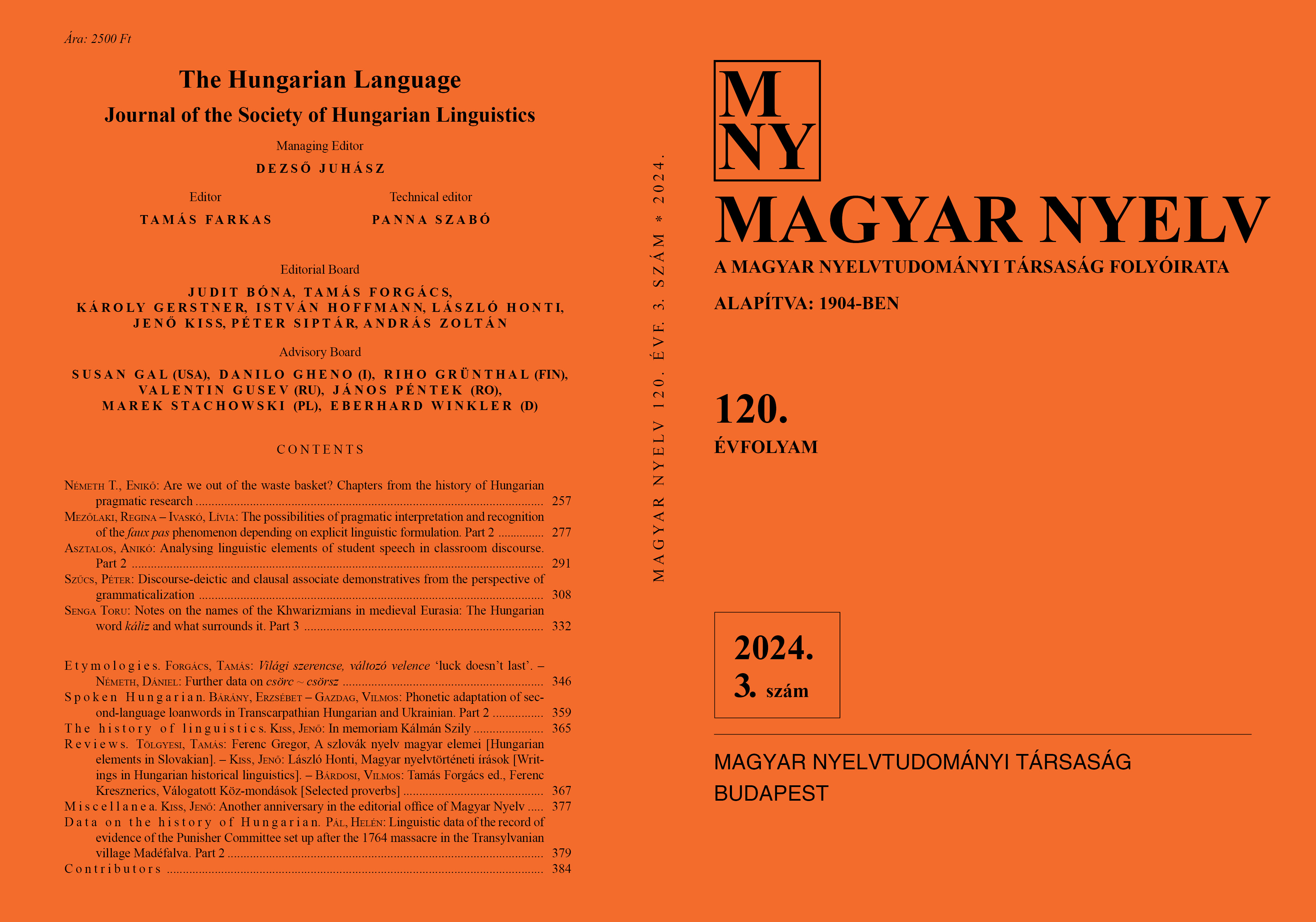Are we out of the waste basket?
Chapters from the history of Hungarian pragmatic research.
DOI:
https://doi.org/10.18349/MagyarNyelv.2024.3.257Keywords:
semiotics, pragmatics, language use, philosophy of language, functional cognitive pragmatics, interaction between grammar and pragmaticsAbstract
The present paper aims to provide an insight into the history of Hungarian pragmatic research. The topic of the paper was motivated by results of the Hungarian pragmatic research which are considerable and valuable in an international perspective. The title of the paper refers to an infamous metaphor according to which pragmatics is the waste basket of semantics and raises the question whether pragmatics is now out of the waste basket. By providing a brief overview of Hungarian pragmatic research, the paper answers the question positively, i.e. it says yes, we are out of the waste basket. In light of the results, it can be concluded that Hungarian pragmatics has become an independent linguistic discipline and is equal to semantics and other linguistic fields.
Downloads
Published
Issue
Section
License
Copyright (c) 2024 Enikő Németh T.

This work is licensed under a Creative Commons Attribution-NonCommercial-NoDerivatives 4.0 International License.
Magyar Nyelv is a Diamond Open Access periodical. Documents can be freely downloaded and duplicated in an electronic format, and can be used unchanged and with due reference to the original source. Such use must not serve commercial purposes. In the case of any form of dissemination and use, Hungarian Copyright Act LXXVI/1999 and related laws are to be observed. The electronic version of the journal is subject to the regulations of CC BY-NC-ND (Creative Commons – Attribution-NonCommercial-NoDerivatives).
The journal permits its authors, at no cost and without any temporal limitation, to make pre-print copies of their manuscripts publicly available via email or in their own homepage or that of their institution, or in either closed or free-for-all repositories of their institutions/universities, or other non-profit websites, in the form accepted by the journal editor for publication and even containing amendments on the basis of reviewers’ comments. When the authors publicize their papers in this manner, they have to warn their readers that the manuscript at hand is not the final published version of the work. Once the paper has been published in a printed or online form, the authors are allowed (and advised) to use that (post-print) version for the above purposes. In that case, they have to indicate the exact location and other data of the journal publication. The authors retain the copyright of their papers; however, in the case of an occasional secondary publication, the bibliographical data of the first publication have to be included.



